“Attention compatriots! Attention compatriots! Enemy aircraft was 50 kilometers south of Hanoi. The armed forces are ready to fight. The compatriots need to calmly enter the bunker. . .”
Whenever people hear the announcer and the siren coming from the loudspeaker system, people will immediately run down to the bunker to avoid bombs and bullets dropped from the US military's air raids in the North Vietnam. This happened so often, to the point that it became a habit of the people of the North during the years of anti-war sabotage of the US army.
The first shelters were used by the people of Vinh Linh (Quang Tri) around 1958 to avoid the dense bombs of the US Air Force. Initially, the people learned from the army, but because the ground was weak, they all collapsed when they were hit by the impact of the bomb explosions. Since then, people have come up with a way to make double slats of bamboo, then dig a hole with a diameter of about 80cm, 1.2 - 1.5 meters deep, drop the bamboo down to make a wall, and plaster the inside with mud to make a wall to make the pit more stable, there is an extra lid made of straw to prevent debris. This personal pit has been tested with American bombs for a long time and has shown a very good defense effect. However, this hole is only used for young people, and the old people and children sit in duck-keeping tents covered with 80cm thick soil around the entrance, there are two piles of dirt at both ends of the entrance to prevent debris.
At that time, in the face of the threat of the US Air Force's wide attack on the Northern provinces, the Party Central Committee advocated researching and building anti-destructive works of the US Air Force, especially minimizing damage about human. To implement that policy, Mr. Phan Duc Su, Chief of Staff of the 229th Engineer Regiment, was sent to work as an expert to help the Central People's Council for Air Defense and met Major General Tran Dai Nghia, Deputy Director of the General Department of Defense. Logistics cum Chairman of the State Basic Construction Board to receive the task. Major General Tran Dai Nghia said: "I tasked comrades with going to Vinh Linh to study the shelter of our people against American bombs in the past time, learn from experience and propose plans for everyone could have a shelter by 1962”

Mr. Phan Duc Su in his youth
After coming to Vinh Linh to survey, Mr. Phan Duc Su improved two types of people's shelters, in which, the duck tent was lowered about 20 centimeters underground to resist the pressure of bombs and was named is the "rafter tunnel" or "A-shaped tunnel". Because it is not suitable for the city terrain, the rafter tunnel is only deployed in the countryside. The rafter tunnel must be reinforced with beams, placed under the ground, depending on the terrain, but the roof of the tunnel should only be about 50cm higher than the ground, covered with thick soil. The truss tunnel only needs one door to go up and down, making steps for the elderly and children to easily maneuver.
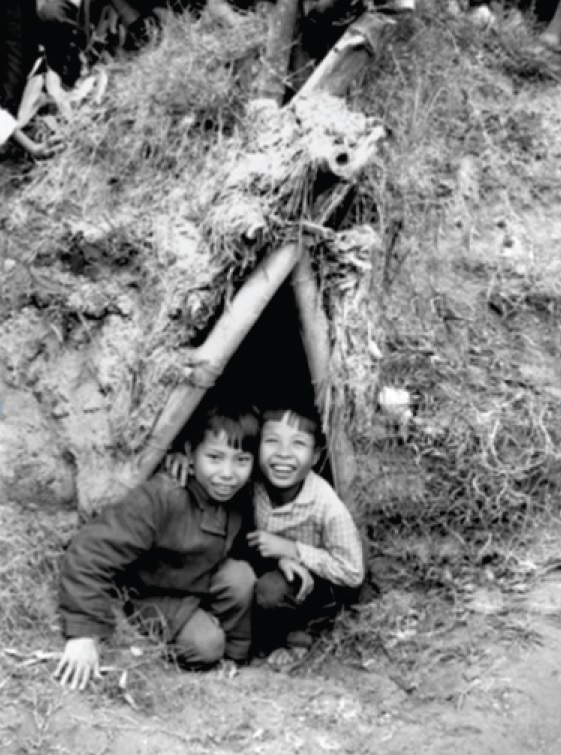
A boy hiding in a bunker. Photo: Author Thomas Bill Hardt
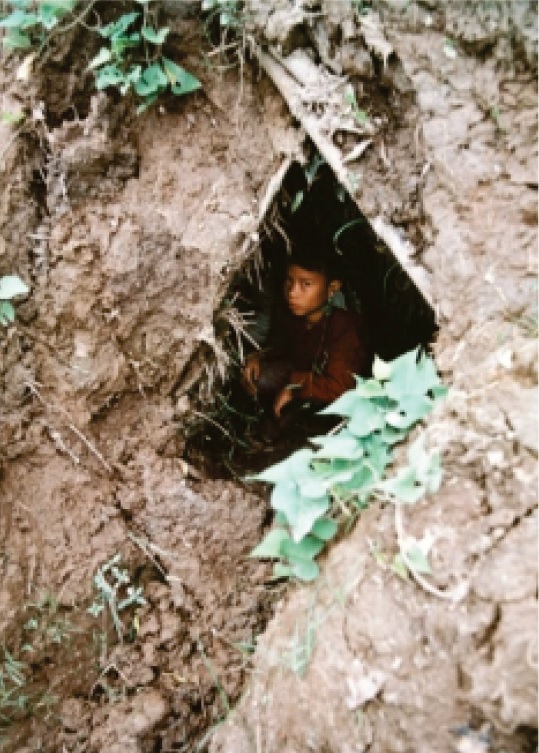
Children at the tunnel door avoid the letter A. Photo: NDN (Japan)
Based on his research results, Vinh Tuy Cement Factory has manufactured a series of personal cement pots, also known as "tank tanks", for deployment throughout the city. In a short time, thousands of tunnels were shipped.

American journalist Charles Collingwood of CBS News stands between concrete pipes used as bomb shelters, Hanoi, April 1968.
The pipes used to make "tank tunnels" were about 80cm in diameter, similar in structure to today's sewer pipes, with very simple materials including coal slag, lime, sand, and cement. Each tunnel is dug deep underground, including 2 pipes that combine to make a 1.2 meter deep hole. The bottom tube has a bottom, with a umbilical cord to draw water. The upper tube has a defect to make the step up and down. The top has a lid that is cast in reinforced concrete, very sturdy. Every 20m there is a cellar staggered on both sides of the sidewalk, almost every house has one in front of the door.
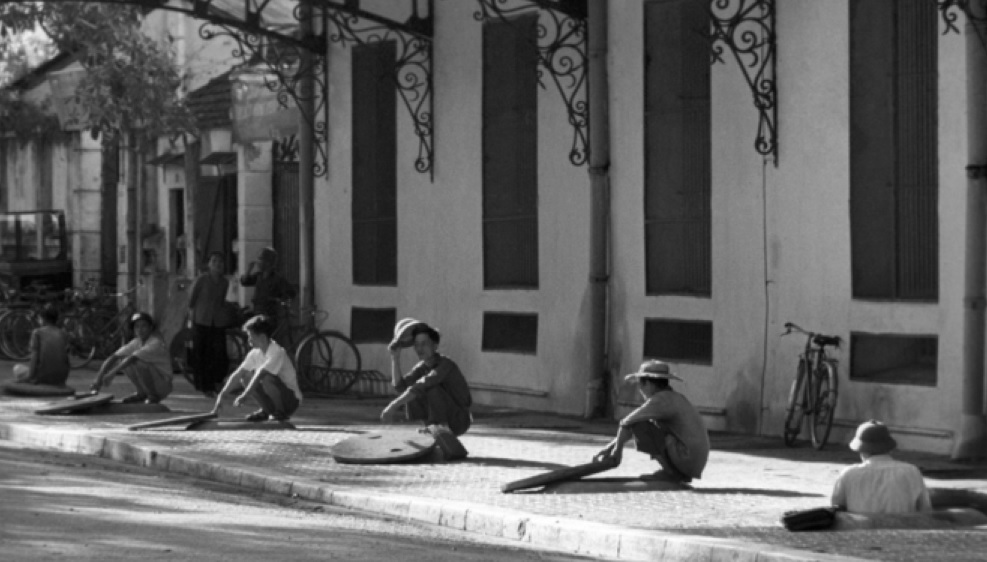
Hanoians stand guard by the bomb shelter in front of the Metropole hotel, Ngo Quyen street, when the sirens sound, 1967. Photo: Lev Porter/TASS/Getty
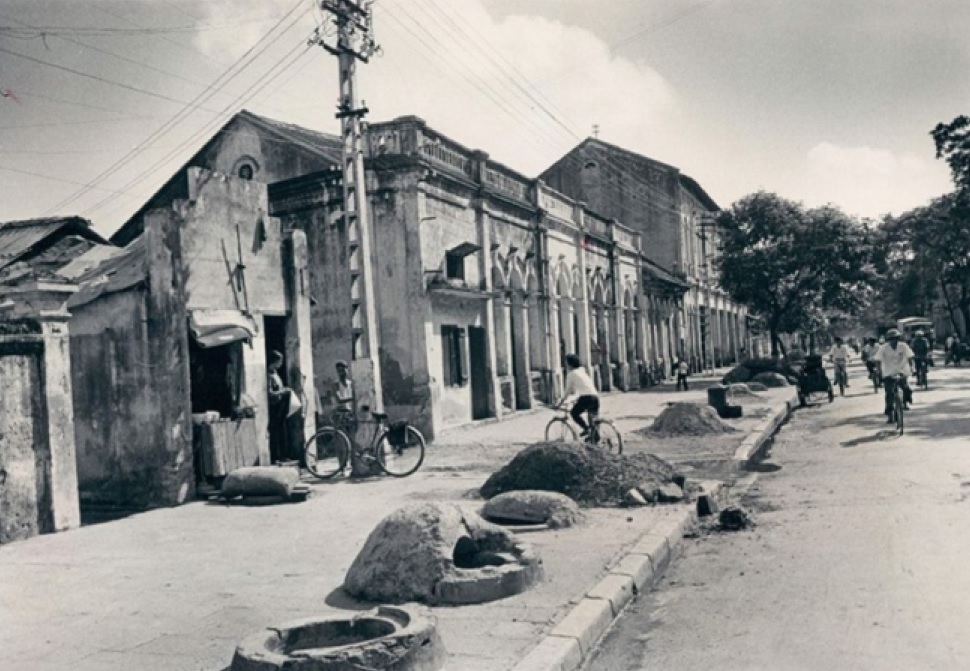
Bomb shelter on Hai Phong street in 1972
The Central People's Committee for Air Defense also coordinates with the mass media to guide people to make their own personal cellars and how to sit in their own. Accordingly, the correct sitting posture is squatting, with both hands resting on the knees, covering the ears with the hands, with the head slightly bent, not leaning against the wall. When there is an alarm, if you are at home, run to the alley, if you are on the road, stop to find the nearest tunnel and jump down.

Private bunkers were dug everywhere so that they could take shelter at any time of the alarm. Photo: NDN (Japan)
Besides, collective shelters were also built. Many dormitories built A-shaped tunnels with a large area. In the cellar, people also put up blankets, blankets, curtains, bed mats and full water jars. Many places such as Nguyen Cong Tru collective, around the Ho Lake, near the Opera House... also have an A-shaped cellar to avoid collective bombs. Hanoi has a rather special bomb shelter built semi-floating on the ground located in the center of Chi Linh Flower Garden, now Ly Thai To Flower Garden with a fairly large area with access to the octagonal house.
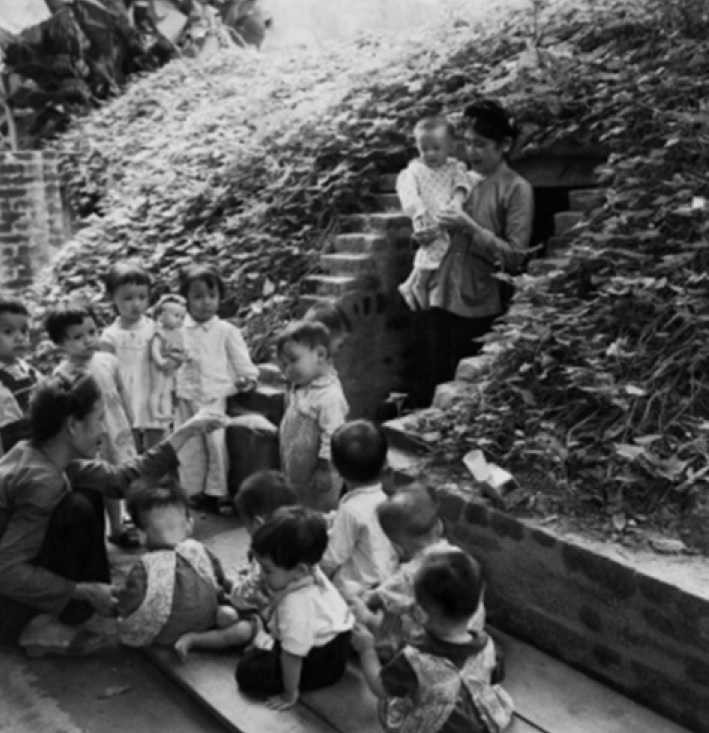
Private bunkers were dug everywhere so that they could take shelter at any time of the alarm. Photo: NDN (Japan)
According to the History of the Hanoi Party Committee, in the war against the sabotage war of the US army, in Hanoi alone, 40,000 individual tunnels and 9,000 collective basements were dug, enough for safe havens. for 90 thousand people. To ensure absolute safety for the people, Secretary of the Hanoi Party Committee Nguyen Van Tran has directed: "The city's requirement is that each person staying in Hanoi must have 3 shelters: at home, in the office and on the street".
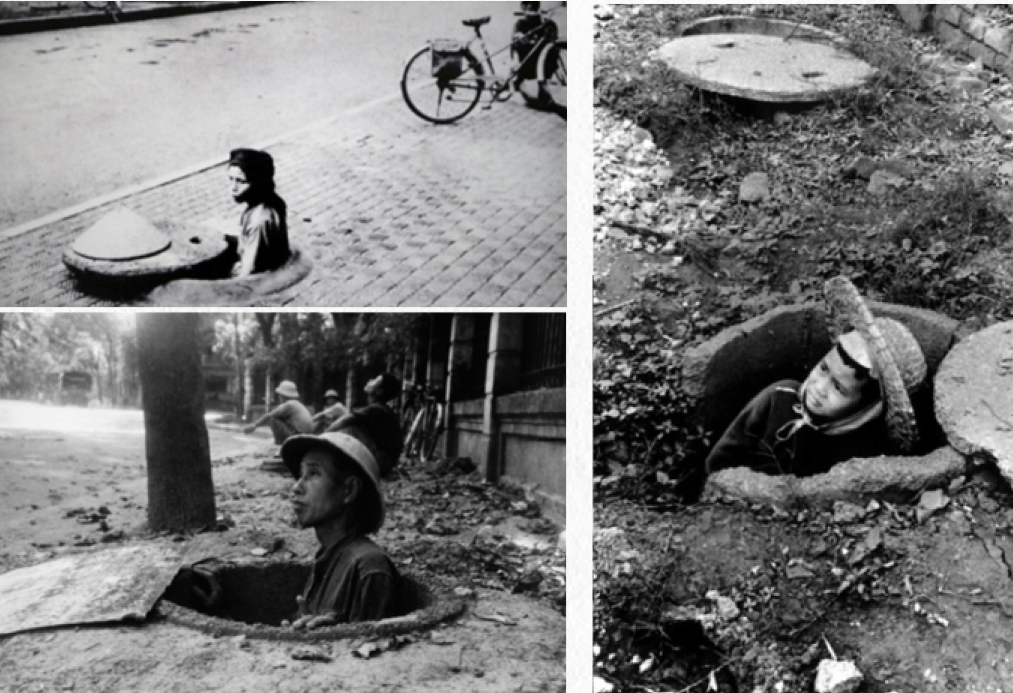
In addition, in areas near mountains and hills, people also take advantage of natural rock caves to make bunkers when American planes come to bomb.
The fear of bombs and bullets has become a constant obsession for people since they were born and lived through the war. Recalling that period, Trinh Thanh Hang, an actress of the Vietnam Drama Theater, said: “The anxiety it penetrates into every fiber, in every sleep. At night, I put on all of Phong's warm clothes, so that if he has to go to the basement, he won't catch a cold. Children in wartime suffered so much. Phong was born in 1966, was born bombarded like that. The boy spoke very early, nine months he spoke fluently. Besides "father, mother", the first word he knows is "run". Every time he hears an airplane, Phong says "u...u...", imitates the sound of an airplane, and then calls: "Mom...mom...dad...dad...run... run...run ..., raise your hand to claim"
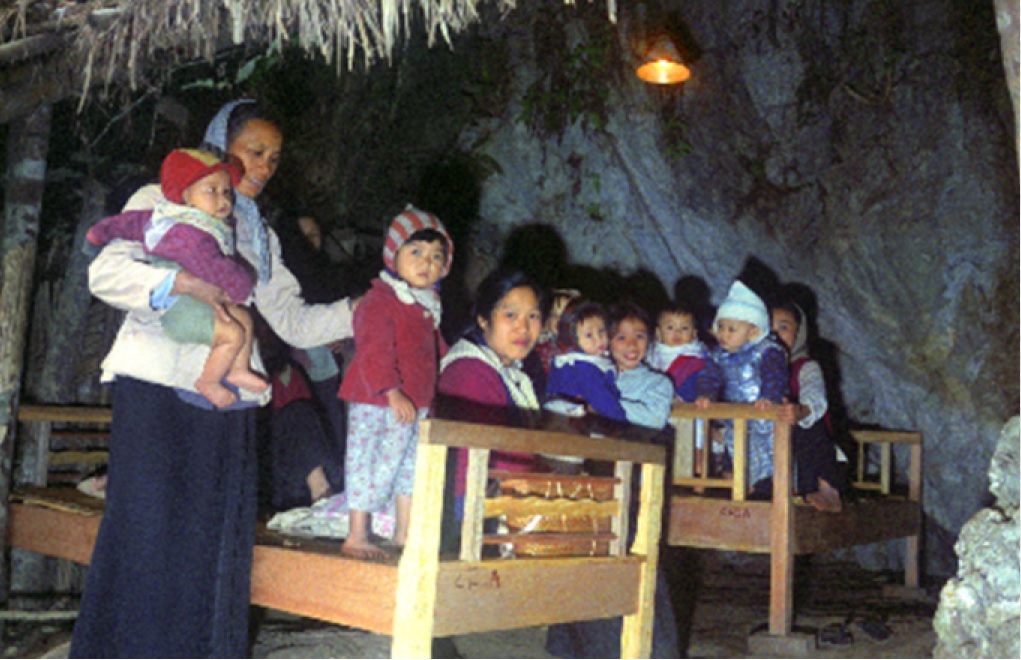
Many kindergartens were evacuated into caves to avoid bombs. Photo: NDN (Japan)
After living under American bombs and bullets, Ms. Pham Thi Vien, then a self-defense officer at Mai Dong Mechanical Factory, said: “In 1967, on the way to the market, my mother gave up the shelter for a baby, she was hit by a bomb and died in the brain at the door of Linh Ung pagoda. I myself was also hospitalized at that time by a bomb grazed my neck. Right after that, I applied for the factory self-defense team.”
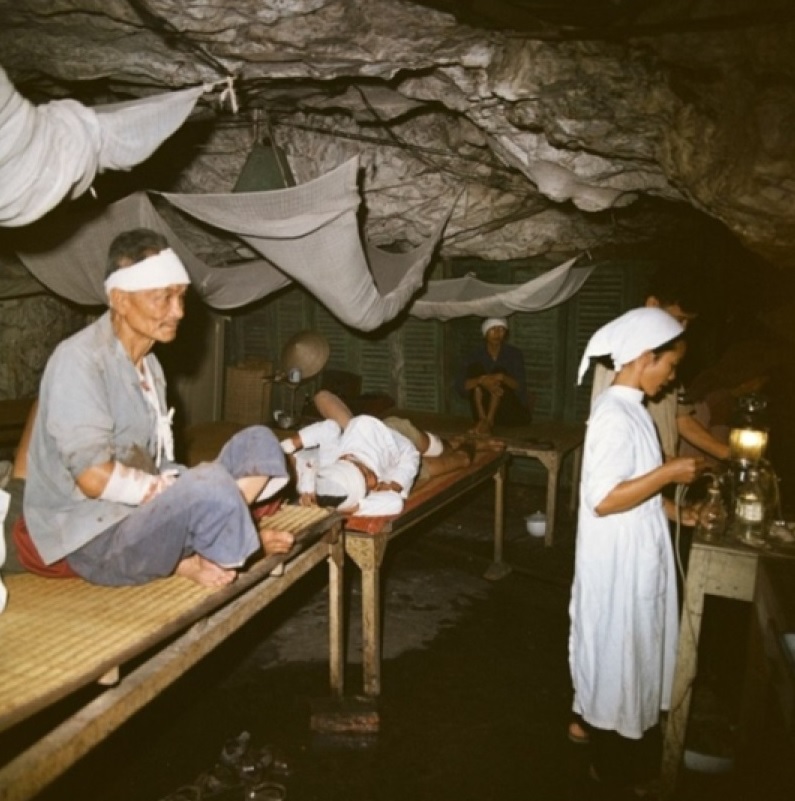
The cave is used as a shelter and clinic. Photo: Author Thomas Bill Hardt.
The tunnels are quite useful in helping people avoid falling bombs, but in many cases still cannot resist the pressure of bombs falling, causing many tragic cases. In the article "Memories of 'Hanoi Children' in Winter 1972" by Hoang Phuong and Duc Hoang, they told about those tragic identities: “The bombardment fell, a strip behind Kham Thien street to O Cho Dua became the ground. Many children kept up with their families to evacuate to the countryside, but many children did not make it in time that winter night. Mr. Le in the alley of Kham Thien market just got married on the afternoon of December 25. On the night of 26, the bomb hit the roof of the cellar where the new bride was hiding. At Mr. Cau's house, in San Quan alley, two people died. When the bomb fell, Mr. Cau was on duty in Hang Bo. The 40-person collective bunker was scattered under the bomb, becoming the largest lake in the dozen or so holes in this alley: Cau's wife still had half of her body shot up in the crater. His 11-year-old son Hung has only a bruised leg covered in mud. He recognized him from the burn scar. Mr. Cau just cried, then picked up the mother and daughter's bodies and put them in a coffin, buried under Van Dien”.
Every year, secret underground tunnels formed during the anti-American resistance war are gradually revealed. Many historical stories and memories of the difficult period that are receding into the past are evoked by witnesses to become attractive stories for the young generation. Beside that, formerly Prof. Dr. Nguyen Van Huy - Deputy Director of the Center for Research and Promotion of Vietnam Heritage Values commented: “Bunker has 4 outstanding values. Firstly, tunnel is an important relic, a testimony of history alone. Next, this is a place that contains a lot of valuable information about the memory heritage, the intangible heritage. Besides, it is also an interesting experience environment. Some important bunkers in the world during World War II have been kept as relic or museums. The ones who work in museum have clearly demonstrated the above values of the relic through the introduction, so they have received special attention from visitors”.